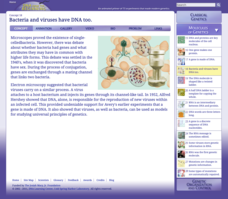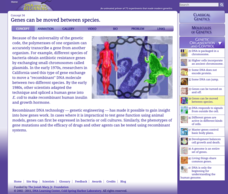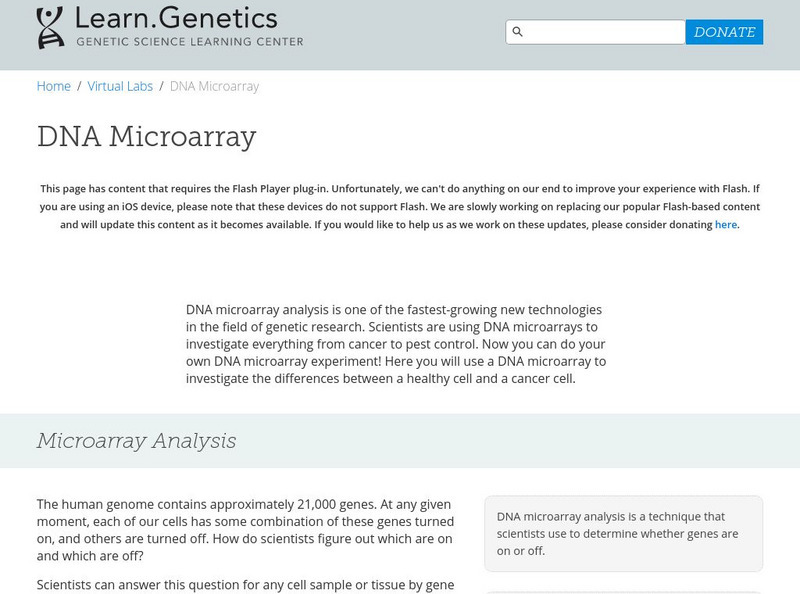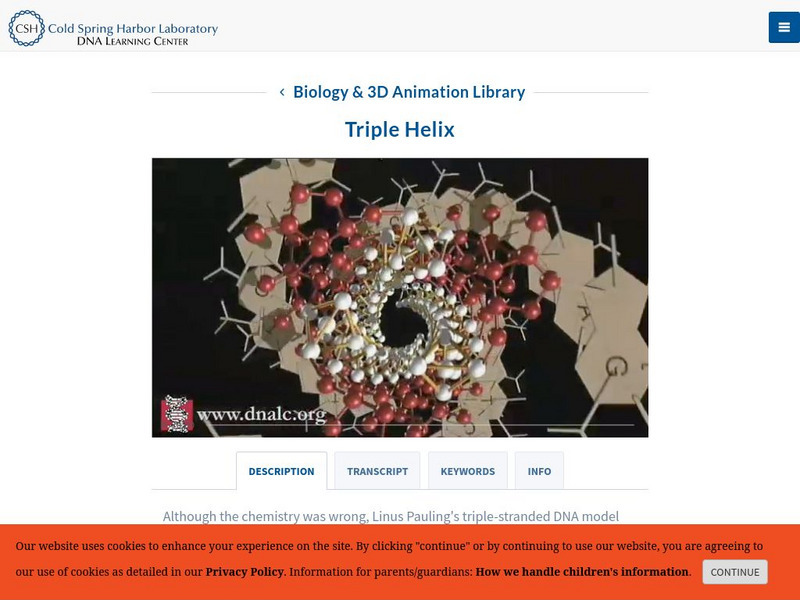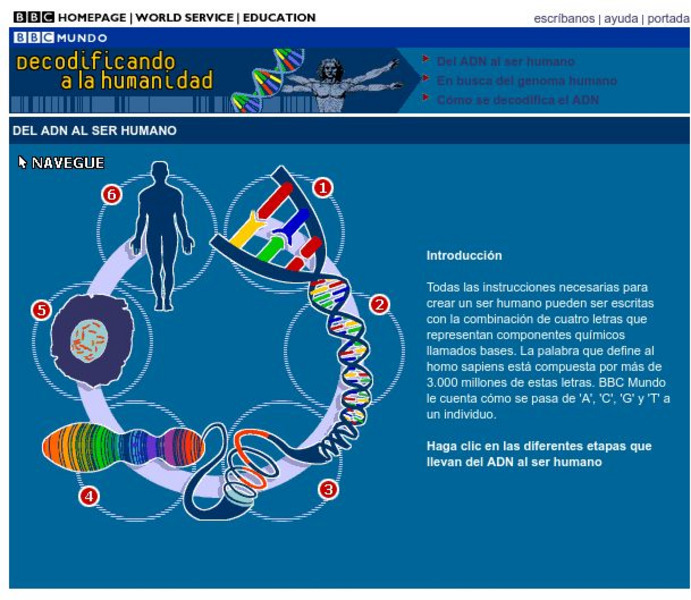Concord Consortium
DNA: The Double Helix
Picture a double helix as a twisted ladder. Scholars see this image through a simulation that allows young scientists to observe a small fragment of DNA in many different formats. They compare the models, colors, bonds, and strands as...
Cold Spring Harbor Laboratory
The DNA Molecule Is Shaped like a Twisted Ladder
One of the first models of DNA appeared to be a triple helix. Young scientists learn about the many scientists who worked to find the shape of DNA. They observe multiple models, tests, and experiments to understand the conclusions. An...
Concord Consortium
Modeling Transcription
Transcription makes copies of the instructions inside all living things. Scholars use the simulation to separate DNA and transcribe the RNA. They see a demonstration of the nucleotide pairings as well as the start and stop instructions.
Cold Spring Harbor Laboratory
Bacteria and Viruses Have DNA Too
In the 1940s, scientists discovered bacteria conjugation, the process of DNA transfer or bacterial sex. The discovery proved that bacteria and viruses contain DNA and led to a Nobel prize. Interested individuals learn about the...
Cold Spring Harbor Laboratory
DNA Is Packaged in a Chromosome
Roger Kornberg, the oldest son of two biochemists, won the 2006 Nobel Prize in Chemistry. Learn about Kornberg and his scientific research with an animation, videos, biography, and an applied problem-solving activity. A summary and...
Cold Spring Harbor Laboratory
Genes Can Be Moved Between Species
Biotechnology changes lives every day, but how did it all start? Learn about Cohen and Boyer's technique for recombinant DNA and the founding of this new scientific study. Then, scholars use the online interactive to discover how Hanahan...
Cold Spring Harbor Laboratory
DNA Is Only the Beginning for Understanding the Human Genome
Mario Capecchi requested funding for a new procedure targeting genes and was rejected. Four years later, after he proved it worked, the NIH apologized and funded his research. Use an online interactive to learn about his research and the...
Concord Consortium
Modeling Translation
An mRNA sequences make proteins, the most common molecules in cells. Young scientists observe translation of mRNA on ribosomes. They view them forming amino acids. Finally, the amino acids curl into proteins.
Concord Consortium
3D Exploration of Bound Antibody and Antigen
Our body manufactures antibodies that are the exact shape for the antigens it encounters. The simulation shows a 3-D model of an antibody and antigen pairing. It allows young scientists to explore the complementary shapes.
Howard Hughes Medical Institute
Virus Explorer
Most pupils know about the flu, HIV, and other viruses, but they don't know what each actually looks like. This interactive shows their relative size, structure, and allows for comparisons. It stresses the similarities and differences...
American Museum of Natural History
American Museum of Natural History: O Logy: Stuff to Do: Make a Dna Model
Learn about DNA by building a model of its double-strand structure.
University of Virginia
Uva Virtual Lab: Dna Close Up & Do It Yourself
A collection of three-dimension DNA models. Users can alter the models by moving or changing the parts.
University of Utah
University of Utah: Dna Mircoarray Virtual Lab
This interactive lab will enhance learning about DNA by virtually translating a gene.
Cold Spring Harbor Laboratory
Dolan Dna Learning Center: Dna Molecule: Triple Helix
A description of how the triple-helix DNA model was a precursor to the accepted double-helix model of our DNA. [0:27]
Concord Consortium
Concord Consortium: Molecular Workbench: Modeling Dna Hybridization
View this simulation of DNA Hybridization.
BBC
Bbc Mundo: Decodificando a La Humanidad Del Adn
Learn about DNA and decoding the human genome by clicking graphical DNA models. You can also review a timeline that shows important moments in human genetics research. In Spanish.
Concord Consortium
The Concord Consortium: Molecular Workbench: Dna Polymerase
Observe the animated model to see DNA being replicated.
Cold Spring Harbor Laboratory
Dolan Dna Learning Center: Model Organisms
Learn about model organisms that research scientists use in lab testing.



